
When Tefal teamed up with Jamie Oliver, I knew good things were cooking. The Ingenio pan collection is the cookware manifestation of years of expertise and experience, boiled into one, versatile set.
When you’re shopping for your everyday cookware, you’ll want equal measures of durability, practicality, and versatility. And, as someone who’s spent months testing the best induction pans on the market, I can say with complete confidence that nothing will deliver that better than the Tefal Jamie Oliver Ingenio Collection.
Not only are these induction hob and oven friendly, they’re also dishwasher safe and incredibly versatile too. The best part is that you can remove the handles, neatly stacking them inside each other in the cupboard, or even the fridge. I'm normally a Le Creuset chef, but with features like that, I think I've been tempted to make the swap.
Whilst these aren’t the cheapest, they’re not the most expensive either. I’ve tested every stainless steel pan set on offer, from Lidl to Le Creuset and these are the best you can get. If you don’t think you need the nine-piece set (four pans for £320), you can opt for a smaller selection, which is just three pans (£135). Whichever you opt for, you can do the maths and calculate you’re getting yourself a good deal.
Specifications

What's in the set?
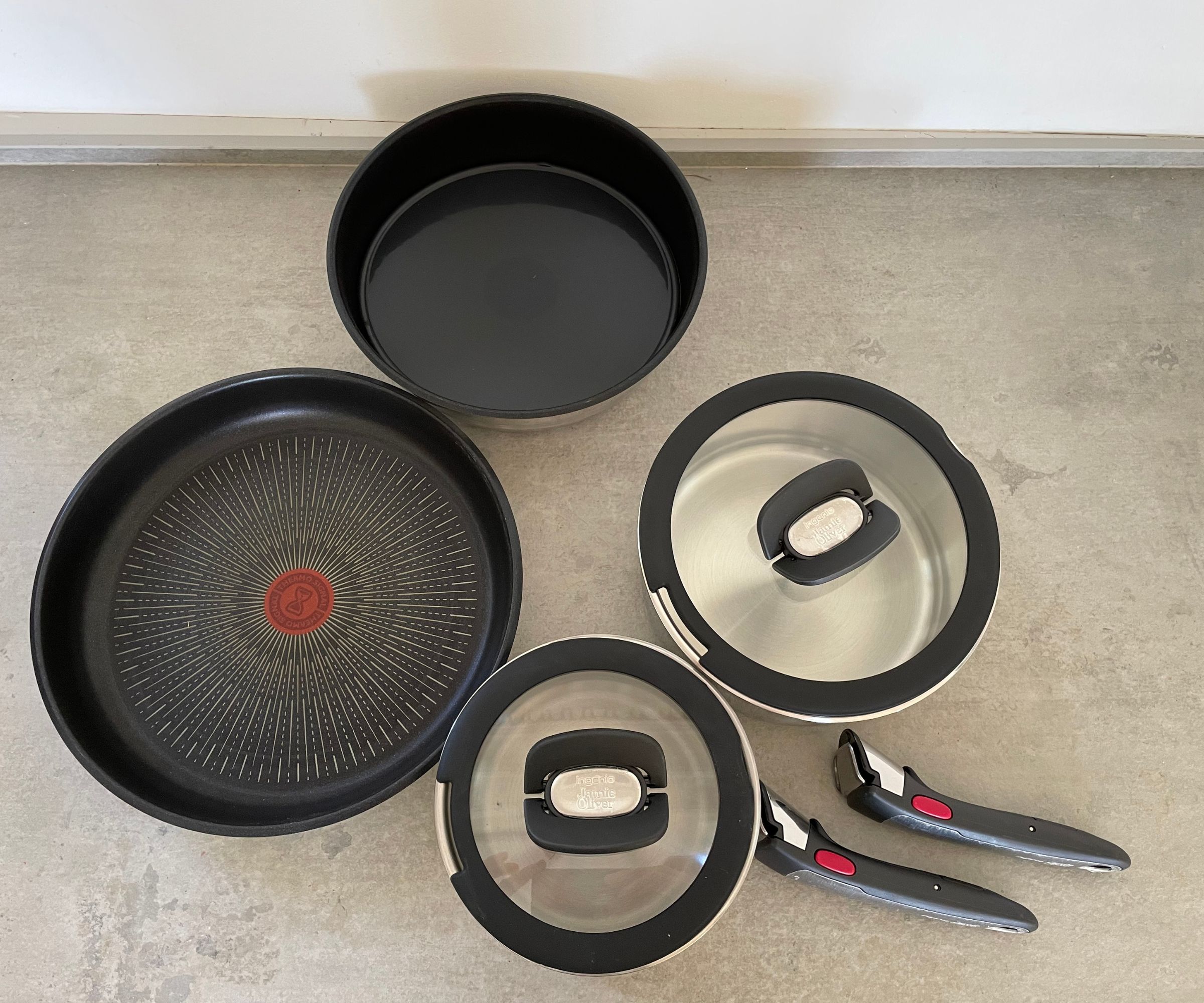
Tefal offers a range of different combinations for the Tefal Jamie Oliver Ingenio collection. You can buy the pans individually, in a three-pan set, or, as I tested as a 9-piece pan set. Whilst that sounds like nine pans, it’s actually not. You get a modest four pans in the set: a 28cm frying pan, 24 cm saute pan, a 16cm saucepan, and 20cm saucepan, with two glass lids, a preservation lid, and two removable handles. It’s enough to cover your hob with pots and pans, especially if you’re cooking a roast.
The saucepans in the set are made from a combination of three materials. The bottom is stainless steel, the core is aluminium, and the external layer is magnetic stainless steel. These all play their parts, Tefal says that the “aluminium guarantees even heat distribution across the pot” whilst the stainless steel ensures that each pan is robust and compatible with a range of different hobs.
Who would it suit?

These pans are pretty functional – they aren’t going to be statement pieces that you display on open shelves, but they’re by no means unattractive. In fact, if you're anything like me, you'll be bringing them out of the cupboard to show them off to your friends when they come around for dinner. The way they stack is so neat and simple, it really is something to shout about.
The sheer versatility and capacity of the pans make them perfect for the average family home. You get four different pans in total, each with enough space for a big batch of pancakes, curry for four, and a nice stew, with leftovers too. If you're a single-person household, these might be a little too big, but they won't be too heavy and they won't pose any kind of storage issues.
The people who these might not suit are more clumsy cooks. Whilst we didn't scratch the titanium non-stick coating, even with metal utensils, there's a chance that you might if you're not careful. Once the non-stick is scratched, the beauty and simplicity of these pans fall apart. You'll need to take care like you would if these were Le Creuset.
Unboxing

Getting all the parts out of the Tefal Jamie Oliver Ingenio collection was a simple task. All of the packaging is either cardboard or paper and the pans are, as you might expect, stacked neatly into a compact box. Of all the pan sets that I tested, this box was the smallest and it came with the least hassle in terms of unboxing.
The packaging didn't demand that I wash the pans before use, but I did give them a quick rinse and wipe with some hot water, gentle washing-up liquid, and a soft sponge. You never know what dust might settle on pans in transit.
I was impressed with the aesthetics of the pans. Whilst I have said that they err on the utilitarian side of things, they look smart. Tefal warns that you might experience some blush discolouration on the outside of the pans, but don't worry about it. It's a natural reaction that you can wash away. I didn't get this when I was testing them, but it's worth noting.
What is it like to use?

The design of this range has clearly been very carefully thought through, in order to ensure they are flexible and suitable for a busy cook. This is the area where the Ingenio collection really comes into its own, in fact. To get cooking, all you have to do is click the handles on the pan you want to use. They're compatible across the range and they don't transfer any heat, but Tefal recommends that you remove them when cooking to minimise wear on your pan. It's a bit fiddly, but you quickly get the knack for it.
In general, the pans are fairly lightweight – even with their heavy bases they are easy to manoeuvre – and they conduct heat well to reach temperature fast. The familiar Tefal Thermo-Spot is used on the frying pans, so you know when everything is at a good temperature to start cooking. The pans also have some internal measurement lines and easy-pouring lips, all indications that this is a carefully thought-out set of pans.
Test 1: frying pan

If there is one pan that stood out of the whole set to me, it's the frying pan. It's the work of Tefal (and frying pans in general) at their finest.
I put all of our frying pans through two tests. The first is making a pancake. I placed the pan on the heat, let the ThermoSpot change colour and then added a teaspoon of butter to the pan. Then, I poured my pancake mix into the pan and tilted the pan around to get the mixture evenly distributed.
The pancake bubbled and browned really quickly, but not so fast that I was apprehensive about a raw centre. When The pancake needed a flip, I clipped the handle back onto the pan, and tried to flip the pancake. On the first attempt, something in my head kept reminding me that the handle was removable, so I struggled to give it the oomph that I would the average frying pan, meaning I got a bit of a fold. On my second attempt, with much more trust and gusto, the pancake flipped and landed neatly in the pan.
The non-stick worked its magic, the pancake was easy to shift around the pan, and you can see from the browning on the pancake that it cooked really evenly. Safe to say, I was impressed.
The next test that I put the frying pan through was onions. Tefal says that you should still add some oil to your pan, even if it is non-stick so that you protect the coating. I didn't need as much as on stainless steel pans, but I did use a drizzle of olive oil still. Working the onions around the pan, they browned and caramelized perfectly. The onion pieces were soft and tender at exactly the same time that the tips started getting some colour. There was enough space for three large chopped onions, though I doubt you'd ever need to pack it that full. On smaller quantities, the results were just as good, although the pan was a little sparse.
Test 2: saute pan

The saute pan is useful for almost everything in the kitchen. Again, this is lined with Teflon's titanium non-stick, so I tested it with another batch of onion and garlic. Tefal recommends that you opt for plastic or wooden cooking utensils, to avoid risks of scratching the surface, which is what I have. However, they say that certain metal utensils are okay. I'd generally avoid them, especially knives and whisks.
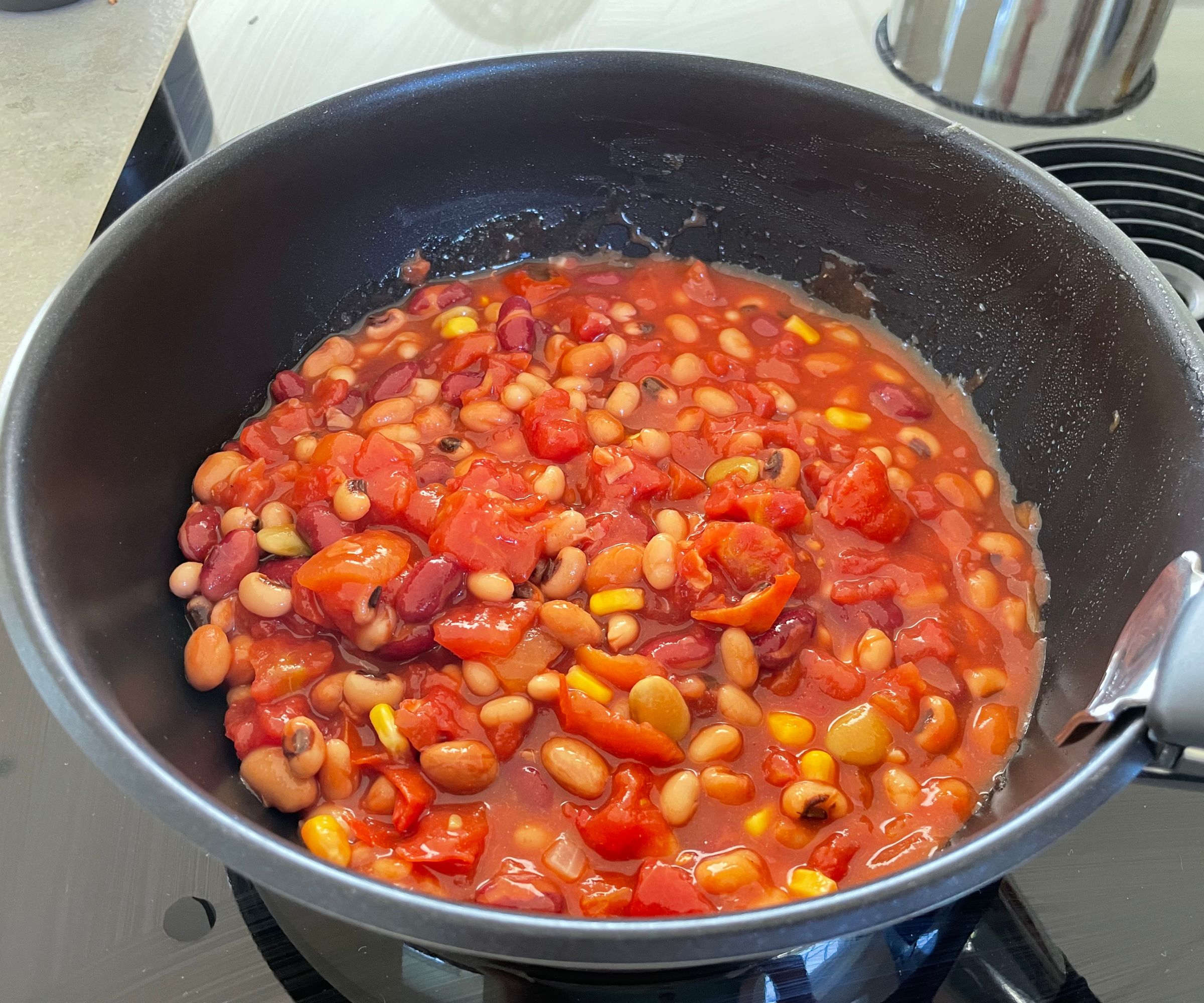
Stirring the onion, I saw the beautiful, golden brown colour coming through again. I wanted to see how the saute pan would handle something like a bean stew, so I added some tomato paste and spices to the pan, still stirring. The pan stayed in place, in spite of me removing the handle, as I stirred all of these together. Next, I added some chopped tomatoes to the pan and let it simmer. In spite of the low sides of the pan, nothing spat over the top and created a mess on my hob. It was all contained within the pan.
I've since made dahls, curries, and lots of different stews, all of which have been perfectly cooked and easy to clean up after. I'm getting the hang of the handles, but it would still be nice to leave them on while I'm cooking.
Test 3: small saucepan

The smaller of the two saucepans is 16cm, which isn't small in comparison to other sets (some are just 12cm), but it's the perfect size for one to two servings of porridge. That leads me on to my first test, porridge.
The smaller saucepan isn't non-stick, which runs the risk of my porridge sticking if I'm not hot on watching it. I made both a single and a double batch of porridge without any trouble. The heat transfer was nice and even, cooking my oats so that they had some bite without leaving them raw.

I also used the small saucepan to warm up 2-3 servings of soup, depending on how hungry you are. This quickly had my pea soup bubbling away, which is really all I could ask for. It didn't stick to the bottom, because I was stirring it often, but the results were great. There was no spitting over the sides or difficulty pouring. However, there are some pans that have a useful lip for pouring our liquids. I was fine getting this out, but it would have been a nice touch. Similarly, when draining water out of the pan (after boiling an egg, to perfection, if I may say so myself), I found the lid a little thin. Some pan lids are robust and really useful for draining, but this is more flimsy.
Test 4: large saucepan


The large saucepan is much the same as the small saucepan, no surprises there. It has a 20cm diameter, which makes it more suitable for boiling potatoes, and making slow stews, casseroles, and curries. So, that is exactly what I did. Again, the heat transfer was nice and even, it cooked all my foods really well. I actually left the handle on for a couple of the recipes and they didn't get too hot. Of course, it's not recommended, but if you do accidentally leave yours on, know that it's not the end of the world.
When I came to draining the water from the pan, I wished for another lid. I think the grass is definitely greener on the other side because the lids are very slim, sleek, and stackable. Just make sure you have a good drainer before switching over to these pans.
Are they easy to clean?
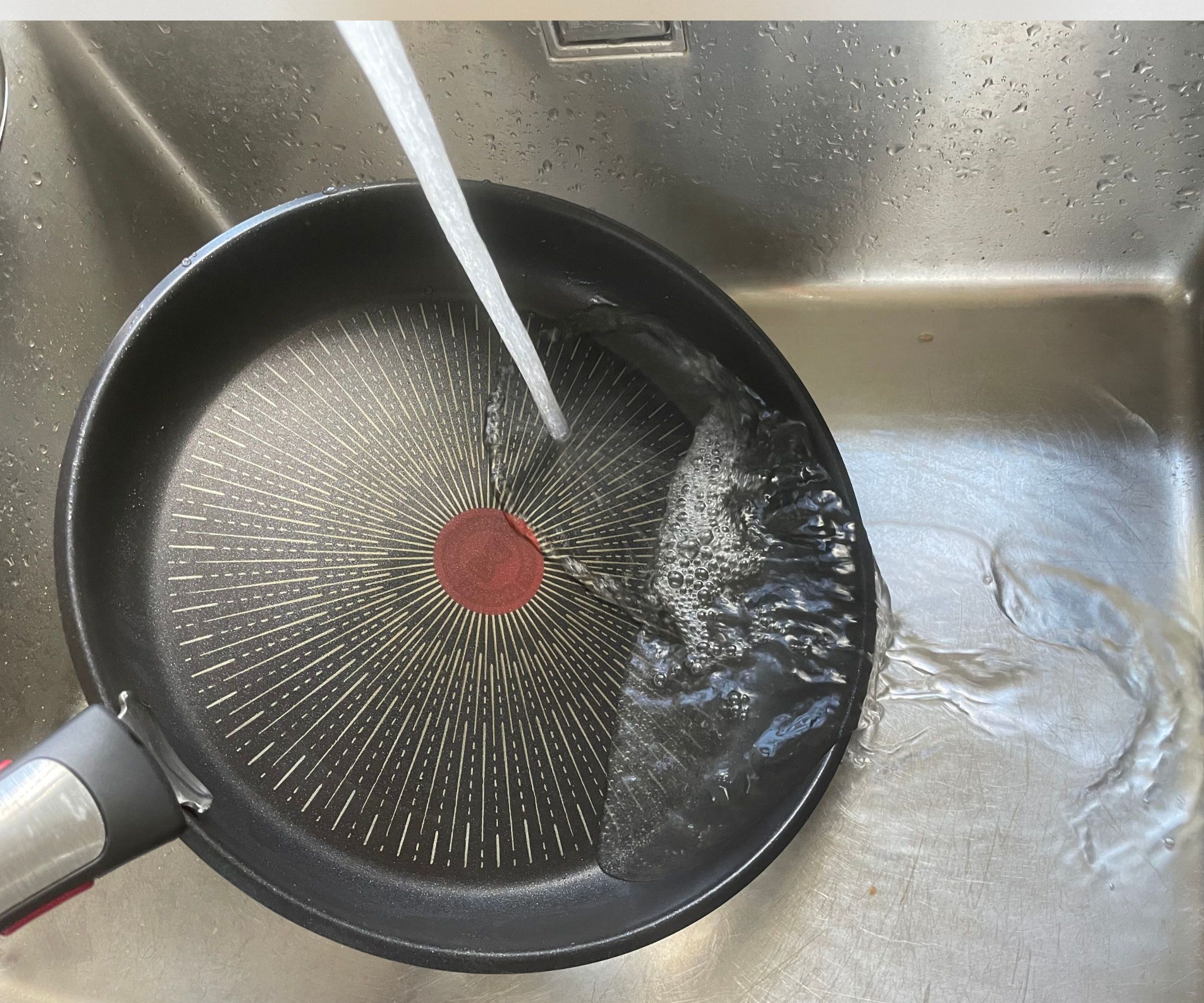
The pans are listed as being dishwasher safe (although the handles aren’t) and I did put them through a few cycles without any trouble. However, I really did the dishwasher cycles to test how well these would work for people who steer clear of the sink. The saucepans and non-stick pans didn't need much elbow grease when I washed them up by hand. I used Ecover, a soft sponge, and some hot water and all the grease and stains seemed to just slip off. They were actually a dream to clean. The one thing to note is that, as ever, when it comes to cleaning products, I’d avoid using anything harsh or abrasive on these pans.
How do they compare?
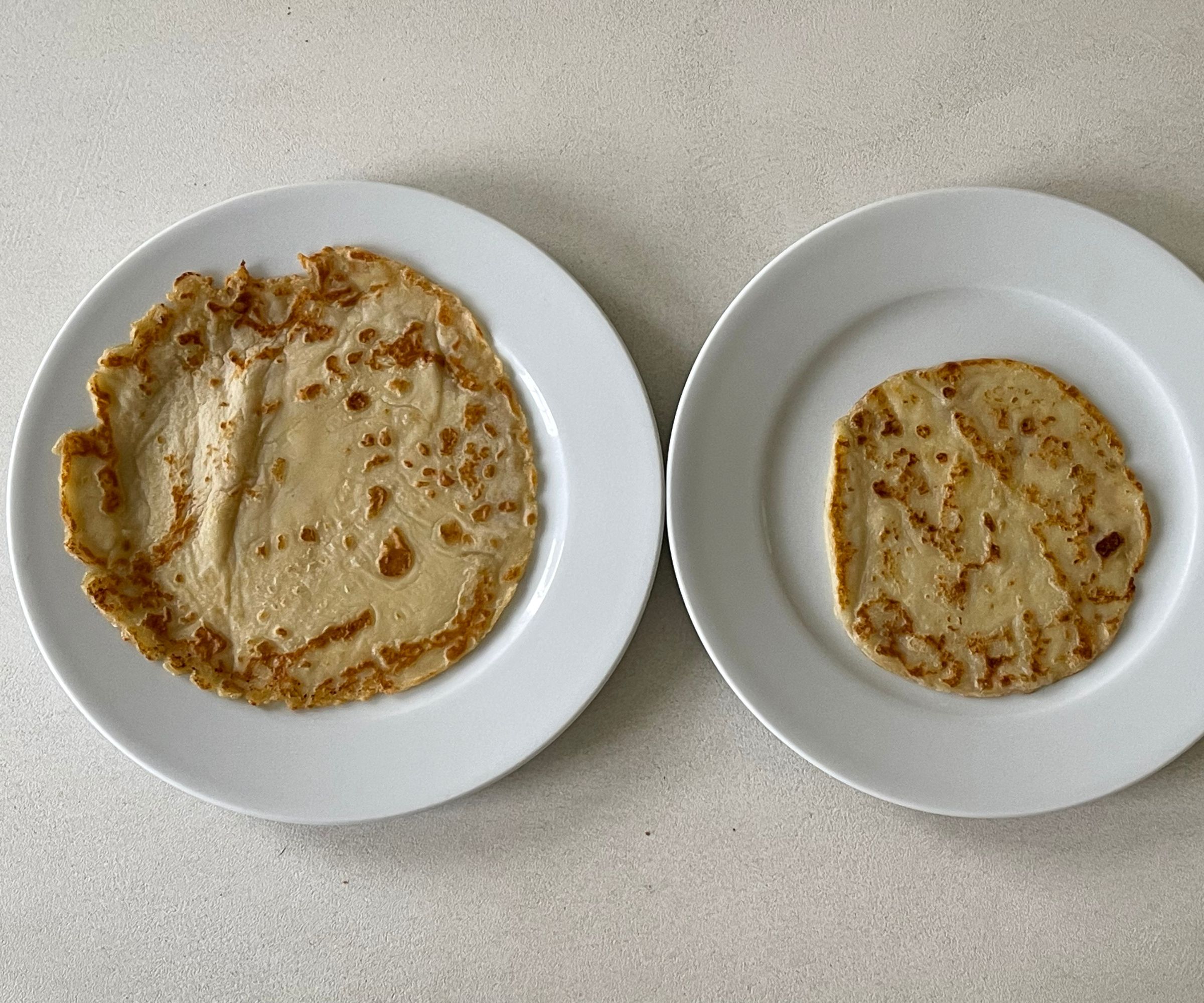
I've been working my way through tests of the best induction pans as well as the best stainless steel pans on the market and I can say with complete confidence that this set is my favourite. It's certainly one of the more expensive sets for everyday use, but it's nowhere near the price point of Le Creuset or professional sets.
I actually normally use a Le Creuset frying pan, but the tefal Jamie Oliver Ingenio one has supplanted the fond space that I used to hold for my Le Creuset. In fact. I'm ready for a whole overhaul of my pots and pans. These are just so tidy. I also really enjoyed the non-stick. It came in handy across all of my dishes. I wasn't expecting to love the pans this much, but I do.
If you wanted something similar, but you're shopping on a budget, the M&S 5-piece stainless steel pan set is a surprisingly competitive option. The pans themselves are much smaller. The frying pan is about half the size of the Tefal Jamie Oliver Ingenio one, but it does an equally good job. Of course, they don't stack quite as nicely, but they're small enough to stack up in a cupboard anyway. Perhaps the most compelling part of the M&S set (aside from the £99 price tag) is that the non-stick is ceramic. Whilst the Titanium used by Teflon is really effective if you scratch it, you have to buy a whole new pan, otherwise, it poses a real health risk. However, the ceramic coating of the M&S pans falls into the non-toxic category, meaning you can be a little more relaxed when you're cooking.
Should you buy them?
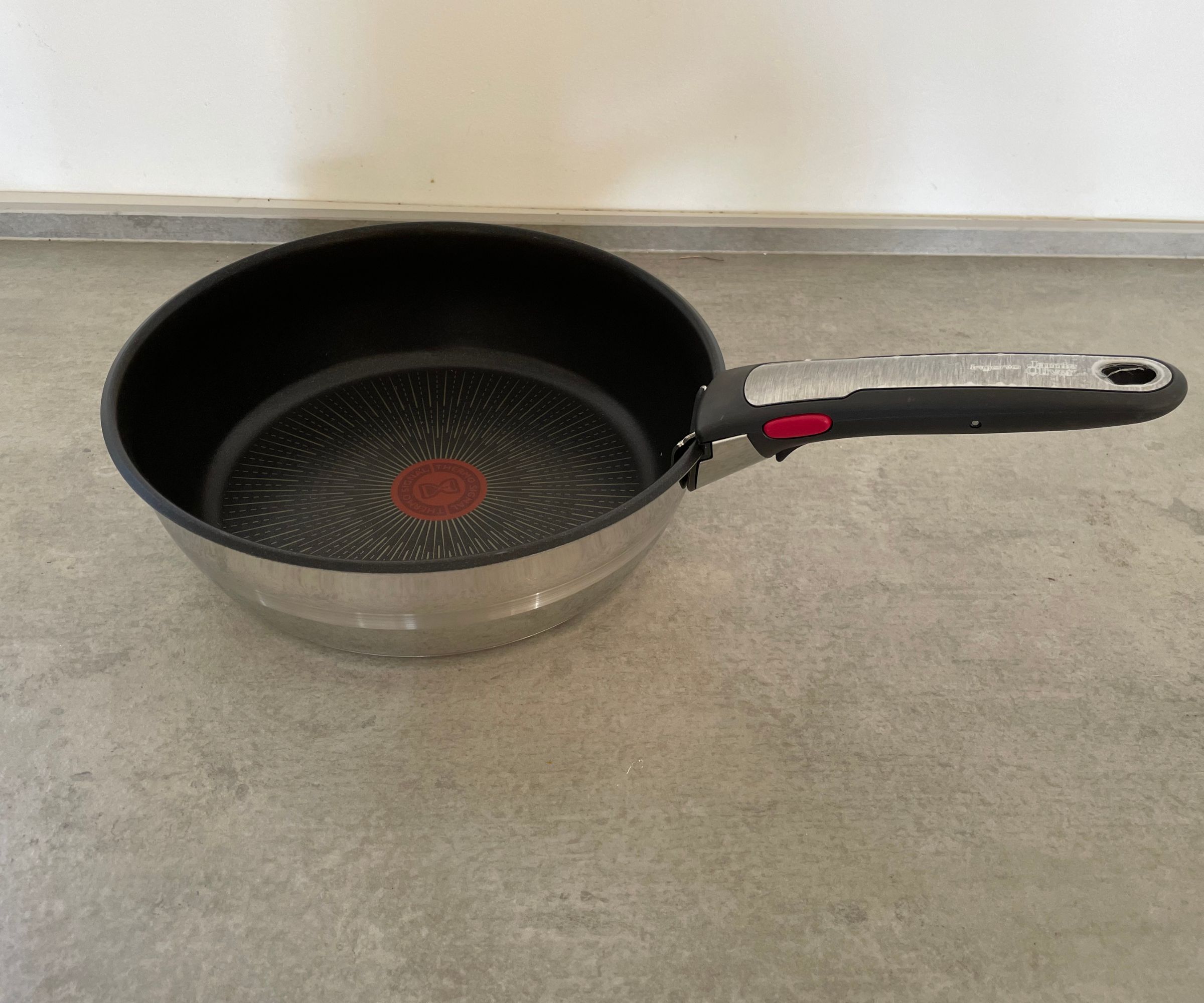
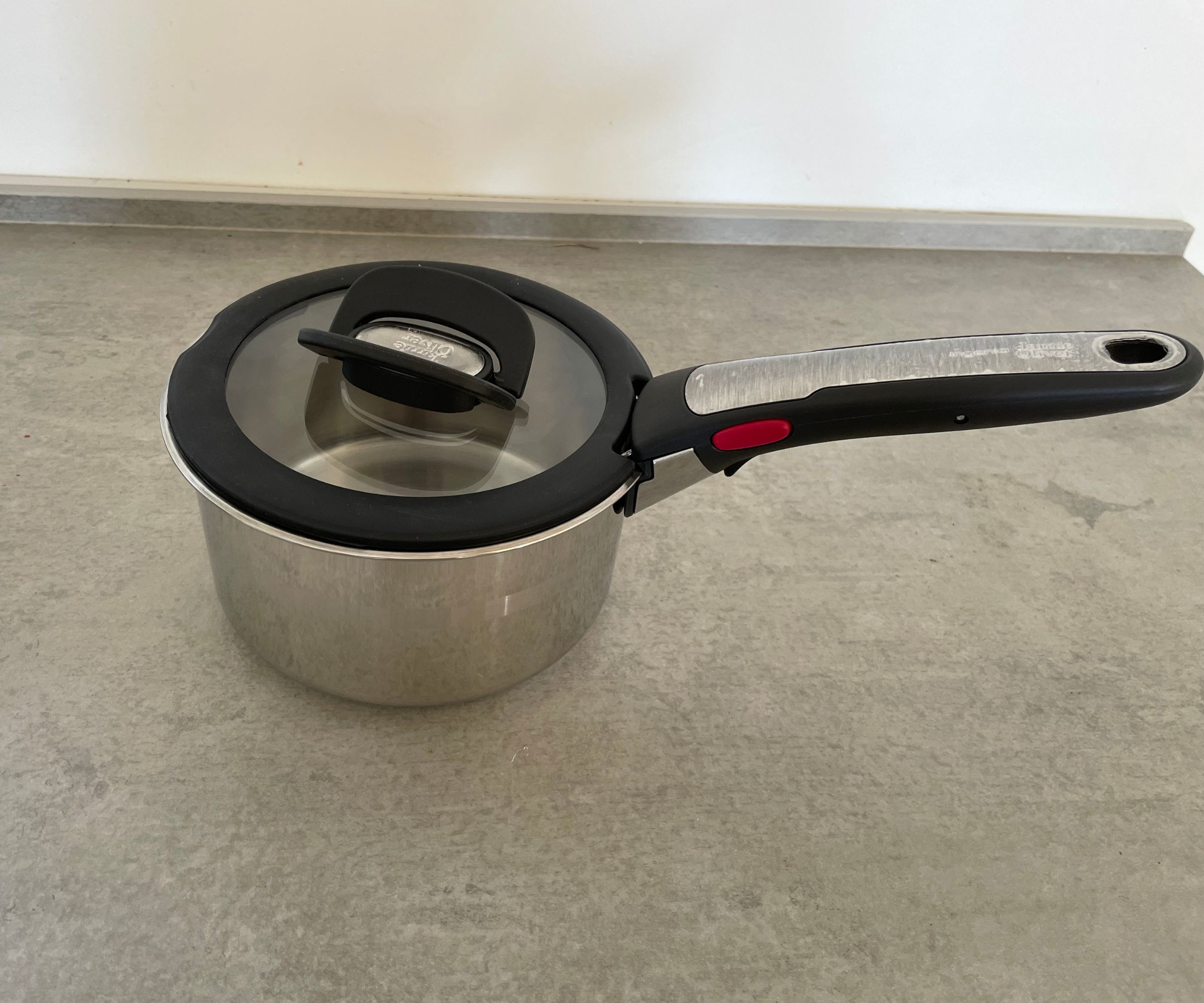
Overall, I loved this collection of pans for its multifaceted functions; the stackable design makes them a real godsend for self-confessed neat freaks, while the option to pop them in the dishwasher is perfect for busy cooks. The potential for the handle to wear away the non-stick coating could, over time, become irritating. However, I think they’d last well if you're careful
How we test
At woman&home, we like to keep on top of all the latest and greatest products on the market. To be able to give you an accurate and competitive review of what's on offer, we've refined a rigorous testing process. The Tefal Jamie Oliver Ingenio Collection was tested by Rosie Conroy back in 2020 and has since been re-tested by me.
When I put these pans through their paces, I was looking for every little touch. I made notes on the unboxing, so you'd know how much you'd need to recycle, whether it's a box that's too big to lift onto the worksurface, and what you're siging up for when you buy the 9-piece set.
After that, I tested out the function of each and every pan. For the frying pan, I normally fry some onions as well as making pancakes, since these can give clear indications of how evenly the heat transfers across the pan.
Then, for the casserole pan, I fried onions and garlic again. It;'s a great endurance test of a pan, because it needs to be able to fry quickly and then offer a low and slow heat for cooking the beans and reducing down the tomatoes.
The saucepans get put through a range of tests. I like to make porridge and soup in a smaller saucepan, since these are simple, speedy tasks that a good pan should be able to do without sticking, burning, or spitting. Then, for the bigger pan, I made jam, curry, boiled potatoes, and a casserole to test the versatility, speed, and heat transfer. It’s in these places that I pick up on the quality of the lids and whether the handles warm up too much.
Then, I do a clean-up, checking that the pans are as easy to wash as they are to use. I’ll also compare them to other pan sets on the market, so that you can check that you’re getting good value for money. I often include an option that is a little cheaper or a little more expensive, so you can see the competition. Essentially, I want to cover all the bases, so you know whether you’re getting good value for money or not. There’s nothing worse than crying over your frying pan, after all.







